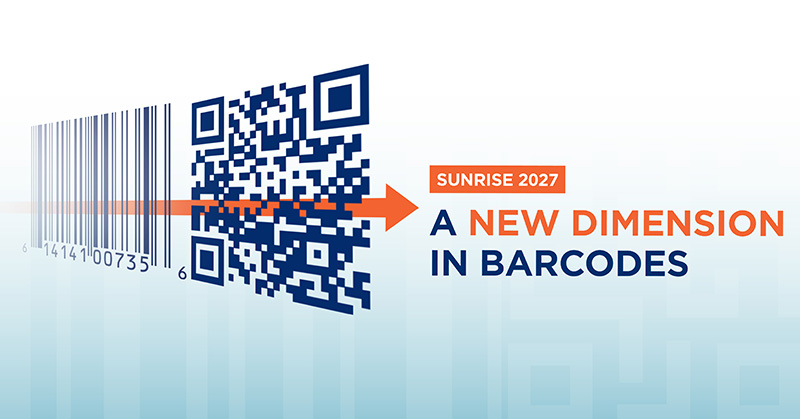What fresh produce needs to know about FSMA 204, 2D bar codes

The Food Safety Modernization Act 204 has a compliance deadline of Jan. 20, 2026. Is your organization ready?
To learn what should be top of mind for all players across the fresh produce supply chain, as well as what resources are available to help on the journey to compliance, The Packer recently connected with Liz Sertl, senior director, community engagement for GS1 US, the not-for-profit information standards organization.
Sertl has more than 20 years of experience in the CPG industry. Working closely with supply chain partners in the retail grocery and foodservice industries, Sertl facilitates collaboration best practices and guidelines intended to help companies improve product traceability and supply chain visibility through the adoption of GS1 Standards.
You were a panelist on a dynamic food safety educational session at The Packer’s West Coast Produce Expo earlier this year, where much of the conversation focused on Food Safety Modernization Act 204 compliance. Panelists agreed that Jan. 20, 2026, will be here before we know it, and all should be on the path to preparedness and compliance. What steps should the fresh produce industry be taking now to be ready by early 2026?
Sertl: My top three recommendations are:
-
Understand what products your organization touches that are impacted by the Food Traceability List (FTL).
-
Bring an internal team together to understand current processes and how data — physical and digital — is moving across the supply chain.
-
Understand gaps and begin to address them.
What are the main improvements of FSMA 204 to the existing program?
The Final Rule will require any stakeholder that touches food in the supply chain to keep more detailed records with more robust data. Supply chain partners will have to maintain the data in their systems for two years — which captures the complete story of how various lots of food moved from end to end in the supply chain — and provide it to the FDA within 24 hours in the event of an outbreak. This effort to track and trace contaminated food in a more expedited fashion hinges on farmers, food producers, manufacturers and retailers investing in transformation efforts to digitize their data and record keeping systems.
GS1 Standards such as Global Trade Item Numbers (GTINs) and Global Location Numbers (GLNs) for identification of products and locations, respectively, are critical to effectively tracking and tracing produce.
Electronic Product Code Information Services (EPCIS), a standard for providing event and transactional data about a product’s journey, is becoming important for its ability to not only provide the status of an item (e.g., in transit, temperature, etc.) but also because it supports the FDA’s vision for sharing event data like growing, receiving, transforming, creating and shipping food products electronically.
Combined, these three GS1 Standards give the industry a foundation for identifying, capturing and sharing information about products as well as support the industry’s focus on recording critical tracking events and key data elements to address Final Rule requirements.

At the end of the day, main improvements under the Final Rule should help answer vital questions in the event of foodborne illness investigations, including:
- Where was the potential contaminated product sourced from and what was the final destination?
- What steps did that product take along the way? Did the product alter or change?
At your recent GS1 Connect event in Denver, I attended a grocery session that included Wakefern, The Kellogg Co., P&G and Trustwell. This session not only focused on FSMA 204 but also the new 2D bar codes. How will these new bar codes provide consumers and retailers more product transparency? How will they change, impact and improve the food safety picture?
Beyond meeting regulatory requirements for traceability, forward-thinking companies are harnessing the power of digital technology to meet consumers’ growing appetites for more detailed information about the products they buy and the companies that produce them. Brands and retailers are moving toward adoption of new two-dimensional (2D) barcodes (e.g., GS1 DataMatrix) that can be embedded on product packaging with virtually limitless amounts of data compared to the traditional linear UPC barcode. In fact, the retail industry has committed to become capable of implementing and scanning 2D barcodes at point of sale within the next four years, in a GS1 US-led initiative called Sunrise 2027.

Besides the opportunity to embed additional supply chain information such as expiration and “use by” dates, batch and lot numbers and more, the 2D barcode is also a data carrier for establishing digital connections between brands and consumers. Its robust data capacity offers an opportunity for brands to provide the increased transparency that consumers are coming to expect.
They can enhance brand identification and loyalty by creating web-based content like recipes and sustainability stories that can be accessed with a simple scan on a smartphone, for example. These are the types of enhancements that will come hand in hand with the progression of digital technology integration in people’s lives, and across industries, as we move forward. It’s important to note, the UPC-A and 2D barcode will coexist — the UPC-A is not being sunset.
As both retailers and suppliers prepare for FSMA 204, who should they engage in the conversation?
Stakeholders ranging from the grower all the way to the last mile need to be swimming in the same direction to meet the January 2026 FSMA 204 compliance deadline. It’s a substantial undertaking and does require a higher level of digital literacy than paper-based record-keeping, but it’s in place to ultimately help curb foodborne illness and improve public health.
With that, many of the food industry’s leading companies are promoting the adoption and implementation of GS1 Standards, which are voluntary, to enable automated information exchange between trading partners, increasing supply chain visibility to facilitate faster, more efficient planning and response to unexpected impacts. At the same time, the ability to share product information across the supply chain is the key to improving traceability for a safer food supply.
What fresh produce products will be most impacted by the FSMA 204 traceability list?
Produce makes up a significant part of the U.S. FDA’s Food Traceability List. The risk-ranking model for food tracing is based on factors that Congress identified in Section 204, including the potential for pathogen growth, with consideration of shelf life; frequency of outbreaks and occurrence of illnesses; likelihood of contamination; consumption rate and amount consumed; and more.
Fresh cucumbers, tomatoes, herbs, sprouts, tropical tree fruits, leafy greens, fresh-cut vegetables, melons and peppers are among the items mentioned in the FTL by the USDA.







